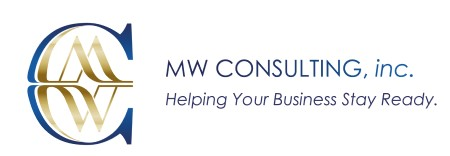EVERYONE’S continually looking for “the next big thing,” whether it’s technology,a management method, or the latest human-resources approach. And in a “now economy” that seems ever-accelerating, businesses feel pressured to meet rapidly changing customer demands, reinvent or evolve themselves more frequently, and beat competitors to the punch by being the first to provide faster, better, and shinier solutions.
While innovations are hugely beneficial to business and society, hype often goes along with the territory. In their quest to reap the benefits of the next big thing, individuals can find themselves led astray by the publicity or buzz surrounding a new product, service, or idea. They may focus too heavily on the hype surrounding an innovation, as opposed to whether the innovation can actually help solve their problem or meet a business need they are dealing with.
This is understandable—and perfectly human. But understanding behavioral factors, such as hype, is critical to avoid making the wrong strategic decisions about innovations. Doing so requires moving beyond the headlines to understand and evaluate an innovation’s potential longevity and extent of adoption, balancing this information with an organization’s tolerance for risk. Armed with this information, leaders can then decide not only whether to embrace an innovation, but how and when they can successfully introduce it into their organization. Having a more nuanced understanding of the factors involved can enable them to mitigate hype and manage expectations for what business problems it may (and may not) help to address.
Of course, it’s not easy to avoid being influenced by hype surrounding what could be the next big thing, or whatever is being forced on decision-makers internally and/or externally. Yet taking a methodical approach to assessing innovations is essential to differentiating between what’s real and what’s not.
Hype and inflated expectations
Hype is generally defined as “publicity; especially, promotional publicity of an extravagant or contrived kind.”While people often think of it as negative, attention and discussion about new concepts or ideas can be useful and generate value: It can help developers better improve their new concepts and refine innovations as they develop. However, publicity surrounding innovations can be overinflated in terms of the benefits derived, the speed with which they will replace existing products, and the ways they might change our lives. This process of overpromising and underdelivering is so well-known that Gartner created a framework more than 20 years ago to describe it, illustrating how early hype gives way to more modest expectations and actual delivery of new technologies (figure 1).
A number of factors drive the prevalence of hype, or overpromising what an innovation can do. First is the sheer enthusiasm and optimism on the part of developers and stakeholders for the unproven but possibly abstract potential of an innovation. Optimism and overconfidence are common personality traits among entrepreneurs and early adopters. Yet while it may be tempting to blame the creators or messengers of hype for often unrealistic expectations, society is also at fault. We tend to encourage, applaud, and even seek out the opinion of people who confidently predict the future, despite understanding (and often forgiving) inherent inaccuracies and embellishments in many prognostications.
Second, hype remains a time-tested method for getting more people on a bandwagon. It facilitates the likelihood and speed of adoption for a new product, service, or offering, which is why firms developing innovations seek to increase communicability, buzz, and observability.
Third, excessive publicity may be encouraged by those who have already made emotional or monetary investments in a concept. That’s because investing such energy helps people deal with the cognitive dissonance, or psychological discomfort, they may have about their decision to embrace an unproven shiny new object. It can also spur excitement about innovation in general, making people more receptive to new ideas, perhaps even encouraging others to try new things.
Explaining hype’s beguiling siren sound
There are several reasons why overpromising on a new product or idea can help gain public support, acceptance, and enthusiasm. For starters, hype can effectively play into our fascination with new for the sake of newness—the tendency for individuals to be distracted by or attracted to new ideas, people, or things simply because they haven’t seen them before. This fascination can be driven by many factors, including the promise of a better solution, disenchantment with what’s currently in place, the excitement of being the first to adopt a new technology, or a desire to put one’s own mark on a business.
Hype also has the capacity to trigger several decision-making biases, many of which are summarized in figure 2. These biases can lead to individuals embracing an innovation too quickly or to a greater extent than they might otherwise have done. For example, by emphasizing limited availability, organizations can create a perception of scarcity. This encourages greater perceived value for products and a greater sense of purchasing urgency among consumers. This desire to be among the first to possess the new product can motivate customers to preorder large volumes of products or line up outside stores overnight. Ever noticed how these queues—say, for the latest smartphone or gaming system—are heavily publicized? It capitalizes on the behavioral economics concept of social proof: a tendency for people to look to the actions of others—ideally similar or “desirable” groups—to guide their own behavior.
Beyond using scarcity to create a sense of urgency, hype can also unduly influence others to embrace an innovation before it has reached maturity. This is due to leveraging the concept of loss aversion: the notion that, when making decisions, people are typically more concerned with reducing downsides than deriving potential upsides. Being moved to action to avoid losing out is by no means limited to marketing ploys or consumer decision-making. Indeed, business clients can feel pressure and a sense of urgency to embrace a new technology or business process, driven not so much by the desire to capitalize on the innovation’s upside potential, but more out of fear of missing an opportunity or being perceived as a laggard. While embracing this new technology may turn out to be the right choice in the long run, the initial decision may be driven by a fear of missing out rather than a well-thought-out evaluation of the benefits and relevant criteria surrounding the technology.
Avoiding hype’s perils
While hype often focuses on what one may lose by waiting too long to embrace the innovation, decision-makers would be wise to keep in mind the adverse consequences that may arise by putting too much stock in hype messaging. Some of the downsides include the risk of consumer dissatisfaction due to unmet expectations. If a hyped innovation does not perform as anticipated, it can leave early adopters in what Gartner’s hype cycle refers to as the “trough of disillusionment.” This is consistent with the expectancy disconfirmation theory, which suggests that satisfaction with an object is subjective—driven by expectations—rather than objective. Even if a new technology has some benefit or marginal advantage relative to existing solutions, if expectations are too high, there may be less satisfaction with the product. Additionally, timeframes of expectation may play into satisfaction. Even if the benefits of a new technology do eventually live up to the promised hype, a truly innovative offering may be deemed a failure simply because it took longer than expected to bear fruit.
Hype can also lead individuals to become disenchanted with an innovation due to over-inflated and often unrealistic expectations regarding its scope of applicability. For instance, additive manufacturing technology has, over time, shown to be disruptive to many business applications, having a positive effect on product development, design, and supply chains. Yet the predictions of many experts of a “3D printer in every household” have been premature.
Another adverse consequence of being unduly influenced by hype extends beyond the product itself. Leaders who continually embrace overly hyped innovations can leave employees experiencing shiny new object “fatigue” in the form of decreased morale, and increased confusion and cynicism—particularly when they’ve had to either abandon tried-and-true methods or jettison recently adopted processes that haven’t been given a chance to realize their potential.
Moving beyond the hype
Several criteria influence the likelihood a new offering will transcend hype to diffuse through a desired target market, the speed at which this acceptance or adoption will occur, and whether the innovation will prove lasting or merely a passing trend. Combined, these criteria can help leaders make more informed decisions about what’s here to stay, and what may not live up to its promise.
Factors determining the speed and extent of adoption
Drawing heavily on research into the diffusion process, recent findings, and market observations, here are some considerations to keep in mind with regard to whether an innovation will be adopted—and how quickly.
Compatibility and complexity. How compatible is an innovation with potential users’ existing routines, norms and habits, and other trends simultaneously occurring in the environment? How will it work with existing assets or infrastructures? And just how complex is it? An innovation doesn’t need to reinvent the wheel. Those likely to be adopted quickly are both easy to understand and simple to use. They enhance an existing practice rather than reinvent it; consumers don’t have to think too hard about using it, and it doesn’t require dramatic changes in behavior. If these criteria aren’t met, an innovation is less likely to be adopted. For example, non-refrigerated milk products have not thrived—even though they provide a tangible benefit to customers. Adopting them requires not only accepting the idea of milk being less perishable, but also storing it in a pantry rather than the refrigerator. This can help explain why companies regularly introduce “new” products under existing brand names. For example, P&G includes name extensions to follow-on products in its Swiffer line so consumers know exactly how to categorize the product and, with that, which specific cleaning products these household innovations should be replacing.
Relative advantage. History shows individuals are willing to make behavior changes, but it may take more time when that change is significant. Critical factors that affect whether we’re willing to change include the amount or degree of benefit, the fear of negative change impact, and the perceived overall risks of change—all considered to help ensure the relative advantage of changing behavior is worth the extra effort. This can be as straightforward as taking an existing product and making it less expensive, simpler, faster, or more convenient. But what if the degree of relative advantage is limited? While the Internet of Things (IoT) has been accepted in many contexts, in one area its success has been relatively limited: kitchen appliances. While smart refrigerators can provide some benefit, both consumer feedback and limited sales of IoT refrigerators suggest their marginal additional value is not enough to drive households to adopt this new, slightly improved, more expensive item. On the other hand, the Amazon Dash Button allowing consumers to reorder goods simply by touching a physical button has been effective. Each button costs less than five dollars, representing a relatively low investment.
Observability and communicability. Innovations that are easily observed are likely to spread faster, since this exposure provides more opportunities to learn about it. For new products that are less observable by nature, the challenge for developers and marketers is to make them either more visible or part of conversations. This can be particularly challenging for components of products (such as ingredient brands) or intermediary services, where greater awareness can come through efforts such as educational advertising or co-branding. German chemical company BASF has been effective in making people aware of its ingredient brand through it’s “we don’t make a lot of the products you buy, we make a lot of the products you buy better” campaign. Similarly, Intel has also raised brand awareness for its processors through the “Intel Inside” campaign.
Trialability and perceived risk.As anyone who’s taken a car for a test drive or enjoyed a free weekend in a timeshare property can attest, products that provide an opportunity for trial are more likely to be accepted or purchased. The same applies for innovations. When evaluating a potential “next big thing,” consider whether opportunity exists for sampling the technology, without making a full commitment. This can help encourage adoption. Many innovators understand this desire to try before you buy, and often provide trial or beta versions to existing or desirable target customers before fully investing or incorporating the innovation. Indeed, much of the success of eyewear manufacturer Warby Parker could be due to its home try-on program, which allows consumers to select five pairs to receive via mail and return free of charge, thereby inducing both trialability and reducing perceived risks.
Perceived risks. The ability to trial an innovation reduces the unknown or potential risks that might arise from full adoption. As previously mentioned, loss aversion tells us that while individuals care about the potential upside of their actions, the potential downside of making the wrong decision weights much more heavily. That’s why the likelihood and speed of adoption of innovations can be hampered by concerns over possible downsides. Theoretically, self-driving (autonomous) vehicles could be safer, more efficient, and ultimately less expensive than traditional vehicles. Yet recent accidents or other risks can cloud that perception. Even if the percentage of accidents involving autonomous vehicles is a fraction of regular cars, their perceived risk seems likely to be a major factor in whether consumers will adopt the technology. Worth noting is the fact that physical risks are not the only risks decision-makers are concerned about. Rather, perceived risks come in many forms, such as financial, social, psychological, obsolescence, and performance, to name a few. Thus, it is critical to consider multiple facets of “risk”—in whatever form that risk may take—when positioning an innovation for adoption and to avoid the hype moniker.
Factors determining an innovation’s longevity
Even if an innovation is adopted, a critical question is its likely longevity. Will it be a passing fad? Or something more significant? In addition to the criteria mentioned in the section above, below are other considerations that have been identified as criteria or indicators to help gauge the potential longevity of an innovation.
Personalization or customization.One size rarely fits all. It can, therefore, be helpful to incorporate the flexibility of customization or cocreation where possible to help users turn “hype” into something truly valuable for them; for example, providers of mobile-phone hardware and software allow users to do everything from choosing the color of devices to adding accessories and customizing screen wallpaper, layout, ringtones, and hundreds of other options. In the case of additive manufacturing, medical devices can be customized to an individual’s unique measurements and needs; 3D printed hearing aids, artificial joints, and orthodontics are just three examples.
Subcultures currently embracing innovation.Another factor for evaluating whether an innovation is a flash-in-the-pan are the subcultures embracing the innovation. Factors to consider are the sheer size of the subculture; its importance or marketplace, sector, or industry dominance; its growth trend; and its connection with mainstream society (that is, fringe vs. core players). For instance, recent Deloitte research has noted firms in non-G7 countries appear to be quicker to embrace emerging technologies in the finance sector relative to their counterparts in G7 countries. It may be worth digging deeper to explore the size, growth trends, and interconnectivity of these early adopters to help predict the potential staying power of these various emerging technologies. For example, the embrace of IoT in the industrial sector demonstrates the significant value of the technology in improving business processes. Similarly, it is important to note that in some cases, what seems like hype can actually simply be the wrong audience. For example, augmented reality glasses were met with resistance in consumer settings, but have found success in industrial settings where they are increasingly being used for maintenance, training, and other areas, driving real value.
Focusing on underlying phenomenon vs. a side effect. One potential challenge for decision-makers evaluating an innovation is to identify and assess the actual trend occurring rather than a side effect. Sometimes it’s the overly hyped or easy to understand side effect that gets initial attention, rather than the actual phenomenon (a recent example in the consumer realm is the interest in Pokémon Go as opposed to a broader interest in augmented reality). Similarly, in the business realm many are treating bitcoin as an innovation when, in reality, bitcoin is a component of the bigger cryptocurrency and blockchain phenomenon. That means effectively evaluating the likelihood of bitcoin being successful requires looking at the advantages and other factors surrounding cryptocurrencies.
Show more
Guidelines for making better decisions
Hype tells us something, but it doesn’t tell us everything. It should be merely one factor in a more comprehensive decision-making process for whether, when, and how (for example, to what degree) to embrace an innovation. Below is not only a summary of the other factors to consider, but also other considerations leaders should keep in mind when being enticed by a shiny new object.
1. Use an innovation scorecard
Figure 3 provides some guidelines to keep in mind as you consider what may—or may not be—the next big thing. Leaders can use their own judgment when considering how potential next big things compare against current solutions and past innovations that were, or were not, embraced.
2. Know thyself—and your tolerance for risk
Besides weighing the characteristics of potential next big things, decision-makers can turn their gaze inward to objectively determine just how well an innovation fits with their organization’s mission, vision, culture, and structure. In terms of culture, one way that companies vary is with regard to tolerance for risk. When weighing potential benefits against possible risks, decision-makers should look beyond their own risk tolerance and take into consideration that of their firm as well as other stakeholders.
3. Define success and manage expectations
At the same time, leaders must understand how their stakeholders define success, and what their expectations are for innovations. Where clear expectations and measures of success do not exist, decision-makers can instead articulate and manage constituents’ expectations.
4. Take your time
Rarely is it the case that he who hesitates is lost. Rather, many companies in established sectors, such as financial services, are becoming more and more wary of hype surrounding emerging technologies, and more concerned with how these technologies will impact existing operating models and back-office operations. Before blindly jumping on an innovation bandwagon, for example, many leaders can create opportunities for trial and experimentation within particular groups or pockets of the organization.
It’s easy to be seduced by hype, buzz, and shiny new objects. Yet rather than focusing on each innovation, decision-makers should better and more frequently focus on the problem at hand. When things don’t work out, don’t blame what’s new—consider revisiting your processes in terms of strategy, decision-making, business and technology implementation and integration, change management, and how you are measuring and refining your indicators of success. Because when all is said and done, innovations don’t create hype: It is people who tend to inflate expectations, overpromise results, and confuse hype with the real potential progress has to offer.




















